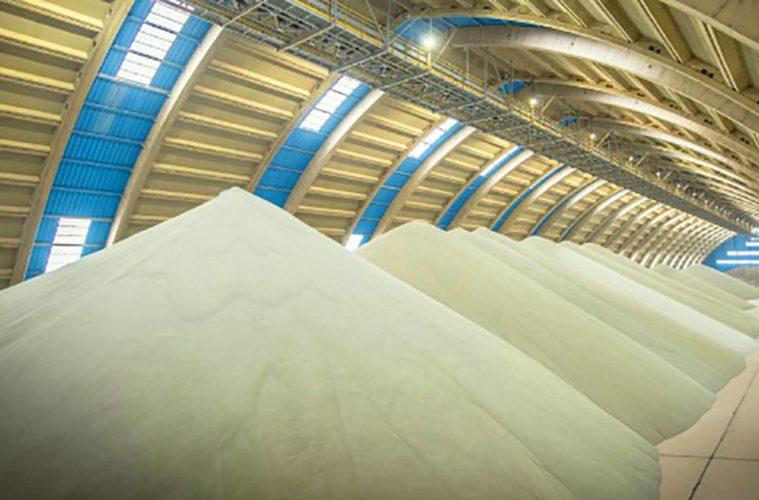(excerpt from Rural 21, November 2023/2 Issue, translated by Willagri)
Should the use of mineral fertilizers be increased in Sub-Saharan Africa? A team of African and European agronomists provides a nuanced answer to this question in an article published in Outlook on Agriculture. Their analysis is based on a review of existing scientific literature and years of on-the-ground experience in Sub-Saharan Africa.
Do agroecological approaches, based on the use of legumes and manure, alone suffice for a long-term increase in annual crop yields in Sub-Saharan Africa (SSA) without using more mineral fertilizers?
The answer is no, according to a team of agronomists from Cirad, the International Maize and Wheat Improvement Center (CIMMYT), the International Institute of Tropical Agriculture (IITA), Wageningen University (Netherlands), and the African Plant Nutrition Institute (APNI). They have published an in-depth analysis of 150 scientific articles on annual crops (maize, sorghum, millet, rice, cassava, etc.) and tropical legumes, both annual and perennial.
Analysis of 50 years of knowledge on nutrient balances
These publications bring together 50 years of knowledge on nutrient balances in Sub-Saharan Africa, biological nitrogen fixation by tropical legumes, the use of manure in smallholder farming systems, and the environmental impact of mineral fertilizers.
The article highlights five reasons why Sub-Saharan Africa needs more mineral fertilizers:
1. Agricultural systems are characterized by very low use of mineral fertilizers, widespread mixed crop-livestock systems, and a great diversity of crops. The input of mineral elements to crops by farmers is insufficient, leading to widespread soil fertility decline due to nutrient depletion.
2. The nitrogen needs of crops cannot be satisfied solely by biological nitrogen fixation by legumes and manure recycling. Legumes can fix atmospheric nitrogen only if symbiosis with soil bacteria functions correctly, requiring the plant to absorb various mineral elements. According to scientists, the ability of legumes to capture nitrogen from the air through symbiosis with rhizobium bacteria is a fantastic opportunity for smallholder farmers, but the amounts of fixed nitrogen will be very low if other nutrients such as phosphorus are not supplied by fertilizers.
3. Phosphorus and potassium are often the main limiting factors for the functioning of plants and living organisms, including symbiotic bacteria. If there is not enough phosphorus and potassium in the soils, there is no nitrogen fixation. These nutrients—phosphorus, potassium, and trace elements—must be supplied by fertilizers, as legumes, which draw these elements directly from the soil, cannot provide them. In the case of manure, it is simply a transfer from grazing areas to cultivated areas, gradually reducing the fertility of the latter.
4. If used appropriately, mineral fertilizers have little impact on the environment. Greenhouse gas emissions related to the use of nitrogen fertilizers can be controlled through balanced and efficient application. Additionally, mineral fertilizers can be efficiently produced to reduce the impact of their production on greenhouse gas emissions, knowing that this impact is low, around one percent of total anthropogenic emissions.
5. A reduction in the use of mineral fertilizers in Sub-Saharan Africa would hinder productivity gains and contribute directly to increased food insecurity and indirectly to agricultural expansion and deforestation. Producing for a population that will double by 2050 will likely require the use of more agricultural land. An extensive strategy harms biodiversity and contributes to increased greenhouse gas emissions, unlike a strategy of agroecological intensification combined with the efficient and moderate use of mineral fertilizers.
However, agroecological principles directly related to improving soil fertility, such as the recycling of mineral and organic elements, the efficiency and diversity of crops, along with agroforestry practices and intercropping of cereals and legumes, remain essential for improving soil health. Scientists are convinced that ‘soil fertility relies on its organic matter content, provided by plant growth that determines biomass returned to the soil in the form of roots and plant residues. The effective use of mineral fertilizers initiates a virtuous circle. These nutrients are crucial for the sustainability of agricultural productivity,’ explains Gatien Falconnier, lead author of the study and researcher at Cirad in Zimbabwe.
Therefore, researchers advocate for a nuanced position that recognizes the need to increase the use of mineral fertilizers in Sub-Saharan Africa, moderately and based on effective practices, in conjunction with the use of agroecological practices and appropriate policy support.
Reference:
Falconnier, G. N., et al.: “The input reduction principle of agroecology is wrong when it comes to mineral fertilizer use in sub-Saharan Africa.” Outlook on Agriculture, Vol. 52, Issue 3, Sep. 2023;
https://journals.sagepub.com/doi/10.1177/00307270231199795




